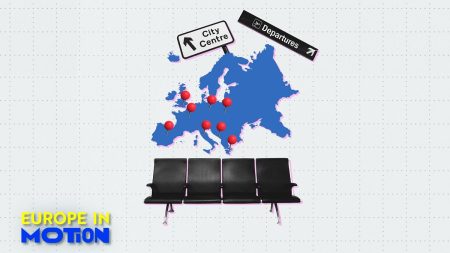The European Union is facing a digital transformation challenge, as only 58% of small and medium enterprises have reached a basic level of digital services according to Eurostat. This falls far short of the EU Commission’s goal of 90% digital adoption by 2030. While large enterprises with at least 250 employees are faring better, with 91% reaching a basic level of digitalisation, the majority of businesses in the EU are still struggling to evolve digitally. Countries with the most businesses at a “very low level of digital intensity” include Romania, Bulgaria, and Greece, while Finland, Malta, and the Netherlands have the highest level of digital intensity.
The Digital Intensity Index (DII) is used by the EU to measure a business’s level of digitalisation. Having a “basic level of digital intensity” means using at least four of 12 digital technologies, or having e-commerce sales accounting for at least 1% of total turnover. These technologies include AI, social media, cloud computing, and Customer Relationship Management. The disparity between small and large enterprises in terms of digital adoption highlights the need for further support and resources to help smaller businesses catch up and compete in the increasingly digital market.
In order to bridge the digital gap and help small and medium enterprises reach the 2030 digitalisation goal, the EU may need to provide more targeted support and resources. This could include incentives, training programs, and funding to help businesses adopt digital technologies and grow their online presence. By encouraging digital innovation and adoption, the EU can help businesses stay competitive in the global market and drive economic growth. Additionally, investing in digital skills development and education can help ensure that the workforce is prepared for the digital future.
The challenges of digital transformation are not limited to the EU, as businesses worldwide are facing similar obstacles in adapting to the digital age. However, the EU’s ambitious goals for digitalisation and the Digital Intensity Index provide a framework for measuring progress and identifying areas for improvement. By tracking digital trends and implementing targeted interventions, the EU can help businesses overcome barriers to digital adoption and thrive in the digital economy. Ultimately, digitalisation is essential for driving innovation, improving efficiency, and staying competitive in the modern business landscape.
Overall, the EU’s digital transformation goals highlight the importance of adapting to the digital age and leveraging technology to drive business growth. By supporting small and medium enterprises in their digital journey and providing the necessary resources and incentives, the EU can help businesses thrive in the digital economy. With the right strategies and investments, businesses can enhance their digital capabilities, reach new markets, and stay ahead of the competition. Digitalisation is not just a trend, but a necessity for businesses looking to succeed in the rapidly evolving global market. As the EU continues to prioritize digital transformation, businesses will have the opportunity to harness the power of technology and drive innovation in the digital age.













